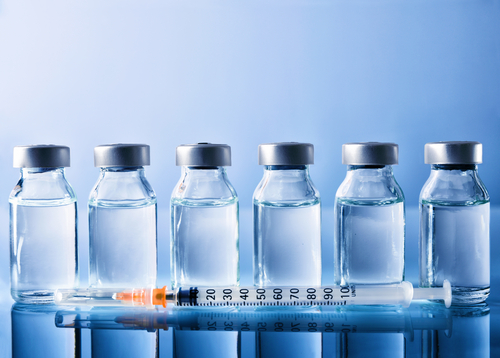Expert Panel Issues Guidance on Rituximab and COVID-19 Vaccination
Written by |

A group of European experts have drafted a series of recommendations for the use of immunosuppressive therapies, such as rituximab, and the timing for COVID-19 vaccination in people with ANCA-associated vasculitis (AAV).
Most treatment plans will require a tailored approach, and a likely delay in immunosuppressive doses during vaccination, the panel advised.
The report, “COVID-19 and ANCA-associated vasculitis — recommendations for vaccine preparedness and the use of rituximab,” was published in the journal Nephrology Dialysis Transplantation.
AAV occurs when the body produces self-reactive antibodies, called anti-neutrophil cytoplasm antibodies or ANCAs, that wrongly attack a type of white blood cells called neutrophils. Neutrophils under attack break through blood vessels, causing vascular damage and inflammation (vasculitis) in various organs.
Patients are often treated with immunosuppressive medications to dampen these excessive immune responses, such as rituximab. This therapy works by targeting CD20, a protein found on the surface of B-cells — the immune cells that produce antibodies.
Immunosuppressive medications, however, are thought to increase the risk of COVID-19 or of severe outcomes upon infection with its causative virus, SARS-CoV-2.
A recent study reported that COVID-19 patients with glomerulonephritis — inflammation of the kidneys often associated with AVV — had higher mortality rates and acute kidney problems than hospitalized COVID-19 patients without the disease.
A separate study of 3,729 patients with SARS-CoV-2 infection, by the COVID-19 Global Rheumatology Alliance, also found those with vasculitis or undergoing treatment with immunosuppressive therapies, including rituximab, at a higher risk of death.
Throughout the pandemic, rituximab treatment in AAV patients was often postponed to avoid infection and poor outcomes, the panel noted. These decisions sometimes had detrimental effects. One study of 206 AAV patients found that 21 interrupted their rituximab treatment, and 12 of these people experienced disease relapses or flares.
“These recent findings underline that rituximab treated patients are at risk of developing severe COVID-19, but effective treatment needs to be maintained to reduce the risk of disease relapse in AAV,” wrote members of the expert panel, which was led by Annette Bruchfeld, MD, with the Karolinska Institutet in Sweden.
These considerations also extend to other therapies. The panel suggested that glucocorticoids as an induction therapy should be dosed at 0.5 milligrams per kilogram per day (mg/kg/day), and reduced to less than 10 mg/day as soon as possible. (Glucocorticoids are also used to dampen immune system activity.)
While rituximab and other therapies may pose a risk, “it is however essential to not delay effective treatment of new AAV and RPGN [rapidly progressive glomerulonephritis] disease and importantly treat relapses adequately,” the team wrote.
Alternatives to rituximab may include cyclophosphamide, mycophenolate mofetil (MMF), or methotrexate.
“COVID-19 vaccines are the most promising approach to rein in the current pandemic,” the report noted. However, for patients undergoing immunosuppressive treatment, the optimal time window needs to be carefully considered, as this type of treatment could lessen vaccine effectiveness.
For newly diagnosed AAV patients or those who have had a relapse, remission could likely be achieved with therapies other than rituximab. “Temporary application of less effective maintenance agents (e.g. azathioprine) might be considered, with a potential switch to rituximab once an appropriate immune response is ensured,” the experts wrote.
Once remission is achieved and during the maintenance phase, vaccination against COVID-19 should not be given until a minimum of six months after rituximab treatment, the researchers suggested. This period should allow enough time for B-cells — those responsible for producing the antibodies the vaccination induces — to get return to normal levels.
“AAV patients have been shown to have considerably longer time to B-cell repopulation after rituximab as compared with RA [rheumatoid arthritis] and other connective tissues diseases,” the report stated.
Resumption of rituximab treatment should wait until four weeks after the last vaccine dose.
How long an immune response against COVID-19 may last in AAV patients, and whether that response might be affected by rituximab’s use is still unknown.
The team advised that the levels of antibodies be closely monitored in AAV patients, and a possible need for booster vaccine doses be kept in mind.





